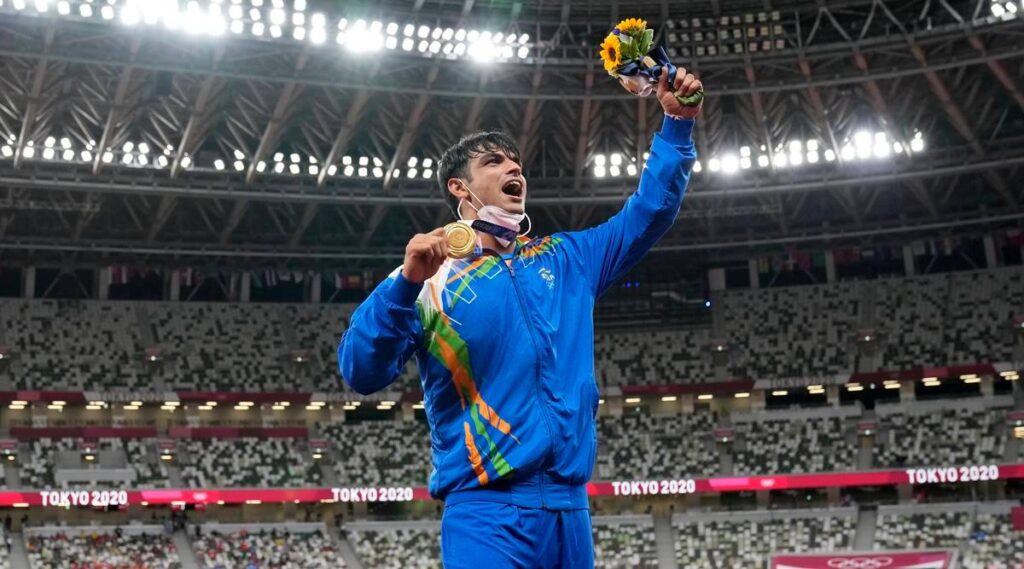Used to celebrating fourth-place finishes till now, India now has a golden tale to savour.
Picture Credit: Gold medalist Neeraj Chopra, of India, reacts during the medal ceremony. (AP)
More than half a century after Milkha Singh looked back for a fraction of a second and 37 years after PT Usha forgot to dip at the finish line resulting in heart-breaking fourth-place finishes, the glorious flight of Neeraj Chopra’s javelin gave the country its first-ever track and field medal, a gold.
Chopra’s speed on the runway, the wide block, long pull of the throwing arm, wonderful alignment of the spear with his motor movements and balance came together on the day it mattered most as he was the supreme thrower at the Olympic Stadium. The Indian looked relaxed in a white headband and fluidly threw 87.03 metres in his first attempt. Chopra’s turn was second on the roster for the first three rounds (after which the bottom four get eliminated) but it was clear he was the man to beat.
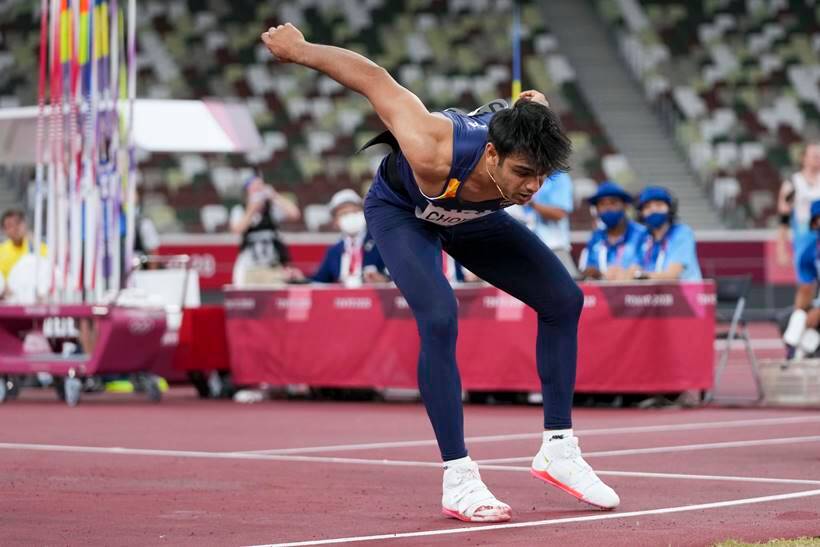
He looked back at his coaching staff in the stands and lifted his arms even before his second throw could land. It was recorded at 87.58 metres, which was to be the best in the final. Chopra being way ahead of the field was not the biggest surprise.
By the end of the first three throws, the contemporary star in men’s javelin and the favourite to win gold, Germany’s Johannes Vetter was out. Looking displeased with the runway, Vetter, a man who has made 90-metre-plus throws look routine, never got close to his best. After a first attempt of 82.52 metres, he turned over his ankle and slipped in his next throw. His third throw, like the second, was also a foul.
It was ironic that the German bowed out even as two of his countrymen, biomechanics expert Dr Klaus Bartonietz and coach Uwe Hohn were in Chopra’s corner watching him out-class the field.
Once Vetter exited with Chopra taking the early lead, the rest of the field was fighting for silver and bronze. Chopra dropped to 76.79 metres in his third throw and fouled the fourth and fifth but had the historic gold almost in the bag by then. On the final attempt, he went all out to register 84.24 metres.
Near-misses end
Weightlifting, boxing, badminton, wrestling and hockey had brought goosebumps which lasted nearly a fortnight during the course of the Tokyo Olympics. However, the breakthrough gold medal from the 23-year-old from Khandra village in Panipat ended years of near misses, tales of which have been romanticised with each retelling but were actually stories of heartbreak and shattered dreams.
Once every four years, a country obsessed with the price of gold, hoped and prayed for a medal of any colour with the famed rings on them.
Now 74 years after Independence, Indian athletes won’t feel like outsiders when they walk into an Olympic Stadium again. Being an ‘Olympian’ won’t matter as much as it did before Chopra’s medal. The bar has been set higher. Grassroot coaches have a fresh story which ends on a happy note. Milkha and Usha remain giants who inspired generations of athletes to aspire to a precious medal. But with one gigantic throw into the Tokyo night sky, Chopra took the sport to new heights.
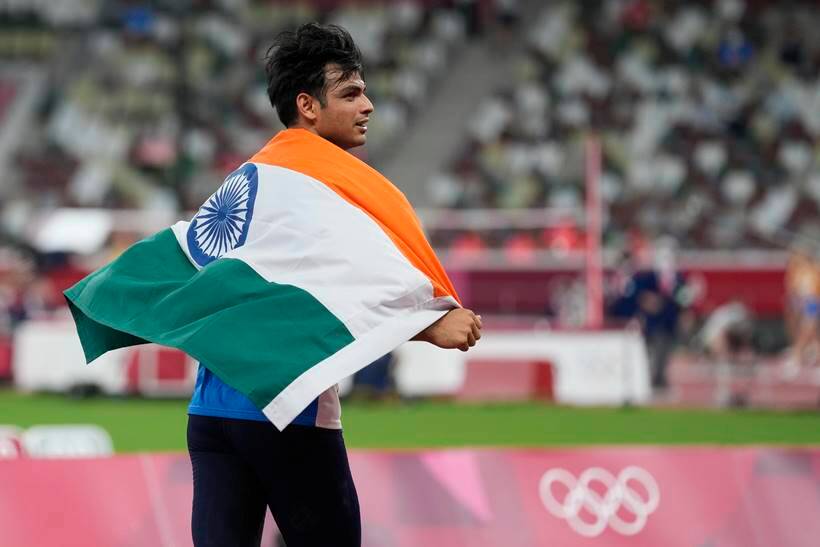
Despite bags of medals at the Asian Games and Commonwealth Games, the Olympics seemed a bridge too far even for some of India’s greatest athletes. Until Saturday evening.
The penultimate day of the Tokyo Olympics began with golfer Aditi Ashok, ranked 200 in the world, playing outstandingly well but finishing outside the medals by one stroke. A few hours later, wrestler Bajrang Punia won bronze in the 65kg freestyle category to make it six medals and match India’s best-ever performance from the 2012 London Olympics.
Fittingly, it was Chopra who broke the tie in an event that really took off in the country just five years ago when he won the gold at the World Junior Championships to become an overnight star. As a kid, he was made fun of, being called ‘sarpanch’ for being overweight. He got his early lessons on how to throw a javelin watching videos on YouTube. Now his physique and technique are what hundreds of aspiring throwers will try to copy.
The anticipation of a medal was high because of how easily Chopra had glided into the final. He qualified with a throw of 86.65 metres to even top 2017 world champion Vetter. But the javelin throw is an event littered with banana peels. Stories of the best falling short of the podium on the biggest day are many. Power and technique need to fuse perfectly else it can go all wrong. Just like what happened with Vetter.
Throwers had complained about the track which made it difficult for them to get a grip leading to the fear of slipping. Yet, Chopra’s movements were smooth and he didn’t look troubled at all.
Some of those who were proven performers at major events found the combination of the ‘sliding feeling’ and the testing weather conditions too difficult. Anderson Peters of Grenada, Keshorn Walcott of Trinidad and Tobago, Julius Yego of Kenya and Marcin Krukowski of Poland had all failed to advance to the final. There remained dark horses in Germany’s Julian Weber, Pakistan’s Arshad Nadeem and Czech Republic’s Jakub Vadlejch, yet this was meant to be a two-horse race between the best thrower in over a year in Vetter and Chopra. Vadlejch took silver and his compatriot Vítezslav Vesely took bronze to take the other two places on the podium on a historic night for India.
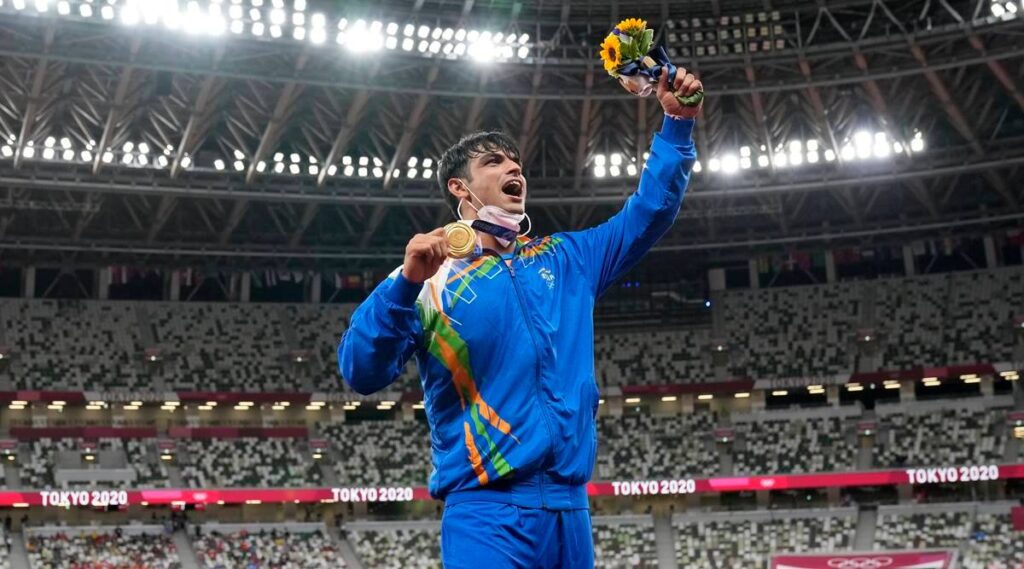
Restless wait Though Chopra made it look easy on Saturday, he had his share of troubles. Like most other athletes, he had a restless wait at the national camp in Patiala as the clock ticked down to the Olympics. With countries not allowing flights from India during the second wave of the pandemic, Chopra could only watch as competitions began in parts of Europe. Vetter was already laying down the marker with 90-plus throws. Being stuck in a constant cycle of training during peak summer at the National Institute of Sports in Patiala had got to the youngster.
In mid-May during a press interaction over video calling, Chopra had expressed his frustration.
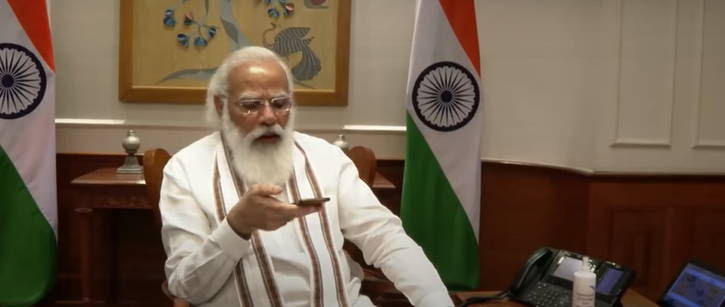
“It is very difficult to train in such heat. Even if you just stand on the ground for five minutes, it is next to impossible (to train). Now it is hot and in June, it is going to get much hotter. It is going to be very hard to train,” India’s Olympic medal hope had lamented. The Athletics Federation of India had made calls around the world but it was getting increasingly difficult for Chopra to reach a destination abroad.
“It is getting difficult because along with training, I need competition. Most of 2019, I missed because of injury and in 2020 and 2021, nothing has happened because of Covid. How long will one be patient? Now in 2021, the other athletes abroad are competing but we have not been able to.”
At that point, Chopra was losing precious time just months before the Olympics. But after weeks of waiting Chopra and biomechanical expert Bartonietz could travel to France. During his European stint, he gradually hit his stride, starting off with a best throw of 86.79 metres in his first competition and followed it up with 83.18 metres and 80.96 metres. He skipped major events, a World Athletics Continental Tour and also the Diamond League at Gateshead to give his body rest. It was the most well-timed break by an Indian athlete.
Article Credit: indianexpress
